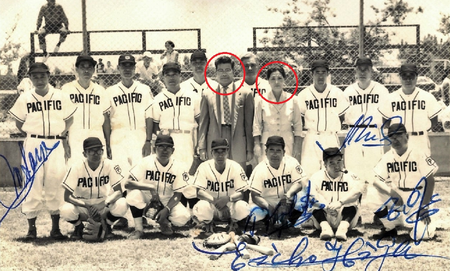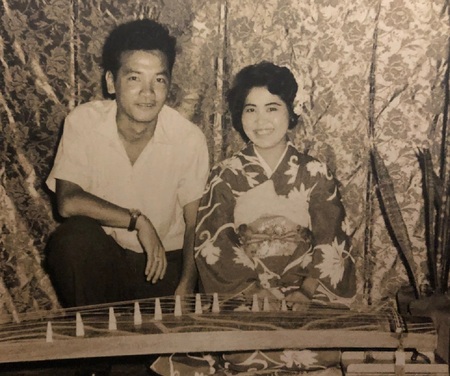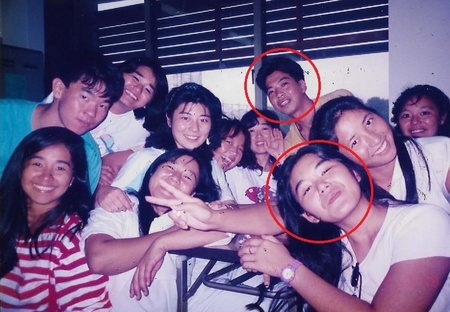Originally from the island of Okinawa, the Japanese surname Higa is one of the most common in that prefecture as well as in Peru’s Nikkei community. In fact, the Higas have played an important role in the community’s history. This is especially true of Haroldo Higa Taira, who shares the history of his ancestors and descendants who continue the traditions and collective spirit in their various gathering spaces.
Eicho Higa, Haroldo’s grandfather, appears in a photograph in the archives of the Carlos Chiyoteru Hiraoka Museum of Japanese Immigration to Peru. A Japanese immigrant who arrived in Peru from Nago shi, in Okinawa Prefecture, Eicho Higa became a prominent and respected businessman and leader, serving as president of the Japanese Central Society in 1963, La Union Stadium Association, the Pacific Club, the Kiuyo Club, Nago Shiminkai, the Okinawan Association of Peru, and other groups.
As Haroldo tells it, Eicho Higa envisioned a united Nikkei community and established ties between the Uchinachus (Okinawans) and Naichis (those from mainland Japan). “He was one of the great leaders in the community, even as a young man. My grandfather rapidly developed several Nikkei institutions and was a founder of the Negreiros Nikkei Club. He was also involved in building the cultural center.”
What was unusual was that his grandmother, Haru Higa, also took on leadership roles, serving as president of Fujinkai in 1967. She appears in a photograph of the ribbon-cuting ceremony for the Japanese-Peruvian Cultural Center, standing next to Prince Akihito, Princess Michiko, and the president of Peru, Fernando Belaunde Terry.

The Higa Family
Haru and Eicho met in Japan and had four children, instilling in them a strong sense of belonging to the Nikkei community. They were enthusiastic leaders and also supported other causes. Haru participated in several social campaigns, such as annual fundraising drives for the Red Cross in Lima. “She was an avid practitioner of the tea ceremony with a group of Fujinkai members, who later founded the Urasenke Association of Peru,” Haroldo says.

Haroldo’s father, Guillermo, is a veterinarian and father of six children with Angélica Asako Taira Miyahira. “We all studied at La Union, the Nikkei school. My sisters and my older brother studied business, accounting, law, and economics,” Haroldo says, recalling that his parents often wondered what would become of him. His younger brother, Arturo, studied literature at the Pontifical Catholic University of Peru and worked in editorial design and publication, creating the collection of Peruvian poetry “Álbum del Universo Bakterial”, which has been published 30 times over 20 years.
Haroldo recalls that he liked to “let his imagination wander,” almost disconnected from reality, but he had also developed drawing skills. He studied graphic design at the same university as his brother and in the third year, decided to switch to sculpture, leaving graphic design behind. His professional career began 30 years ago in 1993, and has included teaching and arts management, including creation of the Young Nikkei Art Show.
His surname was so common that during his university years, he was often asked if he was related to Jaime Higa, a well-known Nikkei artist who is now in his 60s. “There’s a growing number of Higas in the arts,” says Haroldo, who has included more than 70 Nikkei artists and also designers, programmers, graffiti artists, and other creative people, in the seven versions of the event.
New Generations
According to Haroldo, among his nieces and nephews, and counting his twins, Leandro and Facundo, there are nine young people in the fourth generation of the Higa family who will continue this legacy but in a new reality. “When I look back to when I was 14 years old, I was at home, with my Nisei parents and my Japanese grandparents. Now, my children only live with their Sansei parents. The Nikkei youth don’t experience that direct transmission,” Harold says.
He believes that there is a modern Nikkei identity that is expressed through respect for culture and tradition. However, for Haroldo and his wife, Erica Yonamine, a Nikkei from Argentina and a well-known teacher with the Ryuseihonryu Ryuseikai Filial Perú school of Okinawan dance, who Haroldo met when they were both studying in Japan, it is important that the legacy and history of his ancestors is kept alive.
In 2022, Haroldo launched a series of monthly dialogues called “Nikkei Memories” with the Japanese-Peruvian Association. The project was led by the association’s Research Fund and the Carlos Chiyoteru Hiraoka Museum of Japanese Immigration to Peru. Haroldo conducted these dialogues with several Nisei who contributed to the development of the Japanese Peruvian community, and they were shared on the Association’s social media. The second series will take place in 2023.
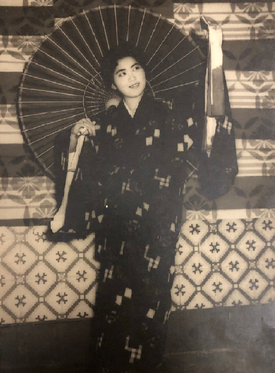
Interestingly, Haroldo’s mother is the daughter of immigrants from Nishihara, Okinawa Prefecture and was a prominent performer of Okinawan dance. “She was a disciple of the famous Okinawan odori (dance) teacher, Miezo Toma,” Harold recalls. Through his contact with so many young Nikkei, he feels that they have their own way of representing their identity. “We try to transmit what connects us. The role of Nikkei institutions, directed by Sansei and Yonsei, is very valuable.”
New and Old Customs
Haroldo and Erica’s sons play with La Union football (soccer) team and the Negreiros Nikkei Club in local tournaments. Although they are not as inclined towards the arts as their parents, sports helps them maintain ties with Nikkei institutions. “We know that they will make connections and that when they’re older, they’ll come back to the community,” he says, adding that his family is multicultural.
“Erica is from Argentina and that’s very evident in our home, with the mixture of Peruvian food and (Argentine) meat. During the World Cup we were big supporters of Argentina. Japan is always a reference and naturally so is Peru.” For Haroldo, his work in arts management with young people has enabled him to find a passion that combines his work as a sculptor with new possibilities, such as showing his work in countries like Japan, Argentina, the United States, the Czech Republic, and others.
“We would like to expand the youth art show to Brazil, Argentina and Mexico, where there are Nikkei communities. We’ve been in touch with foundations and hopefully that opportunity will come to fruition. Of all the arts programs in the community, this one is unique because it addresses the subject of identity,” Haroldo adds. Connecting young people to values and traditions is fundamental for the development of all communities. And using art as a medium, we can help preserve the community for future generations.
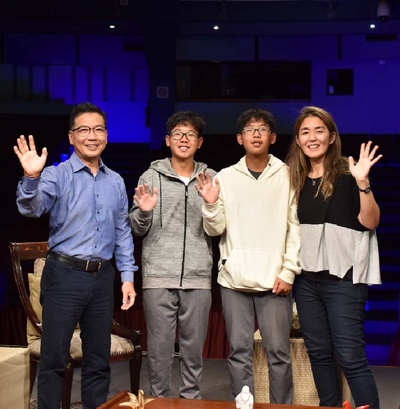
© 2023 Javier García Wong-Kit


